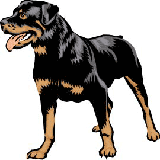Dog Parasite InformationDog Flea Treatment |
|
|
Before you begin with dog flea treatment on your dog, you have to first treat your house. Begin by thoroughly scouring the areas where your dog sleeps and where he usually goes to relax. Wash all the bedding and then place it in a hot dryer. The next step in dog flea treatment is to vacuum every surface possible. This includes all furniture, rugs, carpets, and drapes. Another important part of the dog flea treatment is to wax the floor. This step of the dog flea treatment increases the chance of killing stray fleas as well as their eggs. You may also hire an exterminator to take are of the dog flea treatment that you will need. They offer a welcome relief if your own efforts of treatment are ineffective or if you just do not have the time to do it. Dog flea treatment usually takes two sessions to completely eradicate the fleas. The first dog flea treatment is usually done in the spring while the second dog flea treatment will usually be done in the mid summer. Also, it is ideal to have a dog flea treatment done about once a month if you live in a warm and humid climate. After you have finished with the dog flea treatment around your house, the next step is to treat your dog. The most successful way to treat your dog is to use an insecticide dip. Administer the dog flea treatment about twice per month until you are sure that your dog is free of these blood sucking parasites. For further treatment, use a spray if you have a short haired dog and apply powder to long haired dogs in between dips. Another method of dog flea treatment is to use a dog flea collar. However, using a dog flea collar is not always effective and only provides local protection. Also, using a flea collar as your dog flea treatment may actually cause significant discomfort to your dog's eyes and skin. Dogs who wear flea collars must have their necks checked regularly for inflammation. Checking the neck is important to make sure that your dog is not allergic or sensitive to the chemicals in the dog flea treatment collar. Also, when using a flea collar for your dog flea treatment, make sure that the collar is not too tight; this can obstruct your dog's intake of air. Always check your dog to make sure that he is not chewing the dog flea treatment collar and that the collar does not get wet.Back to the Dog Parasite Information page
| |
|
Related News About Dogs ' ); // get rid of newsfeed display by carp CarpConf('poweredby',''); CarpCacheShow('http://classifieds.agriscape.com/syndicate/dogs.rss'); ?>
|
|
|
|
|
|
Copyright © 2006-2007 dogguidance.com |


